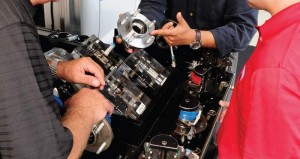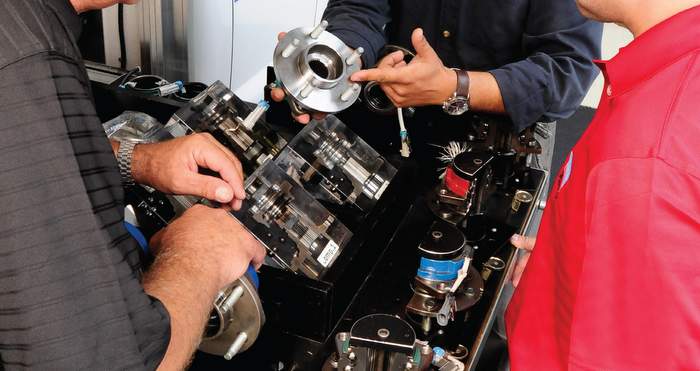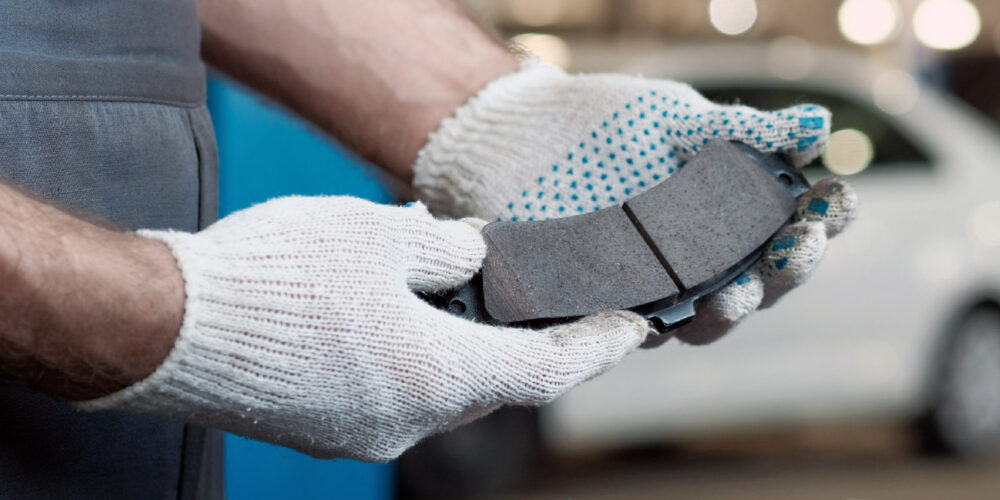Wheel bearing failure, regardless of the type of wheel bearing, may not give much warning notice and can also be tricky for the customer to describe. When a customer comes to you with complaints, start by writing down all of their problems and concerns. Then, ask questions related to the customer’s concerns so that you get a full understanding of the problems with the vehicle.
Make sure to cover the following signs of wheel bearing failure:
 When service work was last performed. Improper installation, such as reuse of a worn seal or a faulty seal replacement during previous service work is often a cause of premature bearing failure.
When service work was last performed. Improper installation, such as reuse of a worn seal or a faulty seal replacement during previous service work is often a cause of premature bearing failure.
Grease leakage. Check for any noticeable grease leakage at the hubcap, which also can be a sign of bearing failure due to improper seal installation.
Hearing noise from the wheel. Ask the customer to describe it. Growling, grinding or whining sounds could indicate potential bearing failure. Ask whether the noise occurs all the time, at certain speeds, while cornering, or at other times.
Service lights on. A constant light on would indicate that the anti-lock brake system (ABS) and/or traction control system (TCS) system has been disabled due to a fault in the system. An intermittent light indicates potential ABS/TCS system failure.
Brake system performance. If brake pulsation or judder occurs when the brakes are applied, it could be due to excessive wheel flange runout. Additionally, a loose wheel bearing can cause a soft or spongy brake pedal, which can cause steering and handling problems or excessive tire wear.
Steering drift or looseness. If the customer is having issues with steering, ask whether steering is loose or if it drifts. If so, recommend an undercar inspection. One or more parts could be worn and in need of replacement, including the bearings and the steering suspension components.
Abnormal tire wear. If the customer’s tires show abnormal tread-wear, recommend an undercar inspection. During the inspection, look for obvious signs — such as wheels with excessive camber — that may indicate that one or more parts could be worn and in need of replacement, or that an alignment check may be needed.
Any time a customer has one of these complaints, it is recommended to start with a test drive, followed by a visual inspection. Take note of:
• Types of noises and when they occur. Do they become louder at faster speeds? Or is the noise more prevalent during turns?
• Vehicle handling, and if there is a vibration.
• If and when the ABS and/or TCS lights come on.
• Any additional issues you find that the customer did not mention.
After the test drive, put the vehicle up on a hoist and perform a thorough inspection, including:
• Carefully inspecting the suspension components and steering linkage;
• Listening to bearing noises on a hoist using an automotive stethoscope, if necessary;
• Inspecting the wheel speed sensors, if present, as well as tone rings and sensor wiring; and
• If an ABS and/or TCS light is on, diagnosing the ABS/TCS system, if necessary.
If the problem turns out to be noise, excessive play, or ABS and/or TCS-related failure in the front wheel bearings, the solution is to replace the hub bearing or tapered bearing and seal. When a wheel seal wears out, it usually leads to bearing failure; as such, the symptoms of failure on seals are often the same as they are for bearings.
For more information and tips from SKF.














